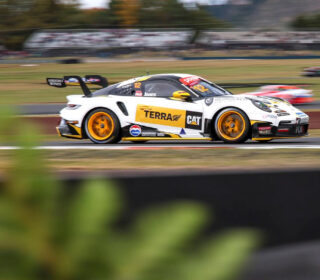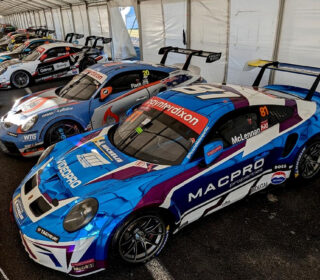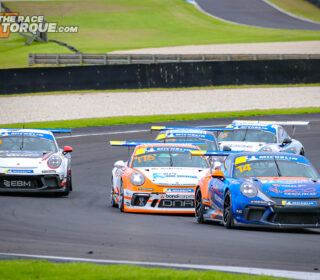HOT TAKE: 4 HOURS OF THE BEND

INTERNATIONAL Sports Car racing returned to Adelaide and Australia for the first time in 19 years this weekend, thanks to the second round of the Asian LeMans Series at The Bend Motorsport Park. Here’s our hot take out of a compelling race, and weekend, of racing.
WORDS: Richard Craill IMAGES: Asian LeMans Series / Frank Hodak
THE debut of Asian LeMans in Australia was a long time coming and represented a massive investment from The Bend Motorsport Park and a massive unknown from the Asian LeMans series itself.
This was a fascinating weekend with cars not seen here before, drivers in the same boat, a circuit layout that absolutely no-one knew how would function and many variables. Here’s our initial, hot-take from a fascinating weekend of sports.
LMP2 IS HOT
IF THIS was an edition of The Race Torque’s patented and globally famous (that’s dubious) Power Rankings, these cars would go straight to No. 1 of the ‘Hot’ list with a bullet.
The battle for the lead in LMP2 – and as such, the race itself – was excellent for a majority of the race and the cars lend themselves to excellent racing.
Twice the G-Drive Ausus 01 and the No. 1 Eurasia Ligier JS scrapped hard for the lead; both times with Shane van Gisbergen behind the wheel of the latter car.
The second-placed Eurasia ‘Team Australia’ entry was also in the mix all day, though were punished by stopping later than their stablemates, never quite able to regain their ultimate track position lost early in the race after leading.
Still, Nick Foster, Aidan Reed (who remains unheralded in these parts despite forging a very tasty little career) and Roberto Mehri were all superb.
TEAM KIWI WAS AWESOME
IT may hurt an Aussie to read this, but the Kiwi’s were awesome.
Daniel Gaunt’s opening stint was supreme and anchored the race, managing two brief moments where he ran wide to build a comfortable lead by the time they stopped for their first driver change.
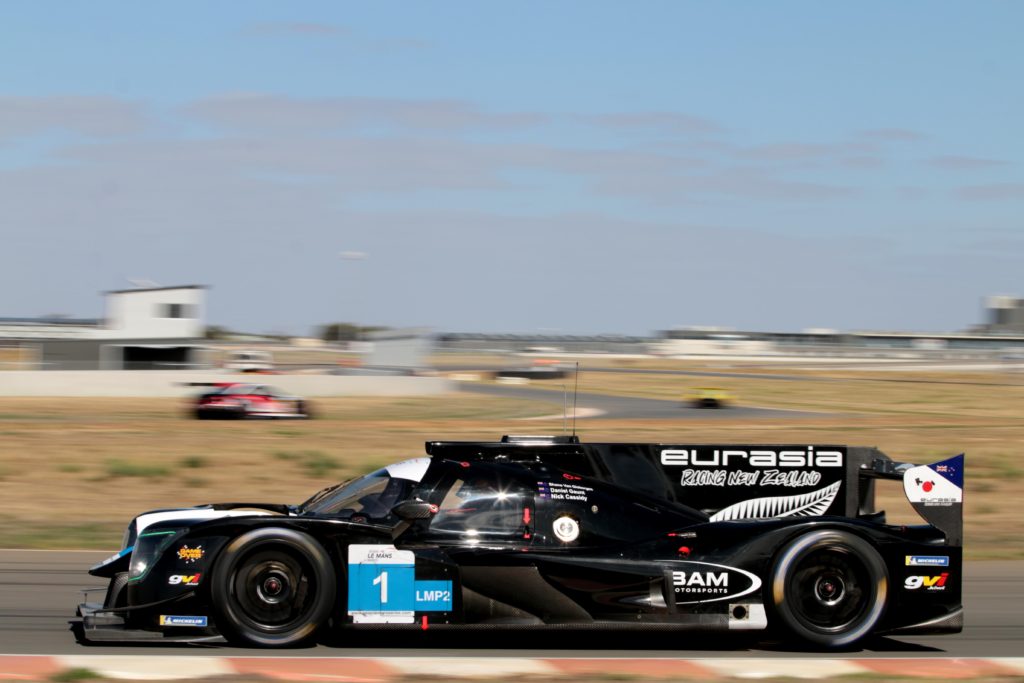
Though the strategic decision to stop early under the first Full Course Yellow ultimately lost them track position later in the day, it was a good call regardless to split their strategy with the sister car.
It was criminal, then, that their hopes of what looked to be at least second position came crashing down late in the race after the field went green with 10 minutes to go, the car limping home and into the garage. It denied us a Cassidy charge and the trio a deserved podium finish.
SHANE VAN GISBERGEN WAS MORE AWESOME
IT GOES without saying that SVG was mighty in his LMP2 debut.
His middle stint was picture perfect, his negotiating traffic was aggressive yet controlled and his attempts to pass the G-Drive car were fairly typical SVG.
The author of this story is 36 and yet still hasn’t learned how to speak properly on many occasions yet it took SVG two laps to work out the second-fastest form of Prototype racing in the world. The guy is a force of nature – one week after testing a GT3 car on the high banks of Daytona which, in case you didn’t notice, is a bloody long way from The Bend..
SAFETY RULES POSE INTERESTING QUESTIONS
THE in-race caution rules utilised by the Asian Series, standard across ELMS and WEC as well, proved a talking point.
Their Safety Car rules differ from those locally, primarily in that they close the pits during the Safety Car deployment. This is good.
The use of Full Course Yellows, where the field slows to a predetermined speed on their pit lane limiter, locks everyone in their positions relative to each other on track while the incident is recovered.
However, the pits remain open and anyone jagging a well-timed pit stop under a FCY period gets a huge advantage – as experienced at the end of the race when G-Drive jagged it perfectly.
With the Eurasia ‘Kiwi’ car having already stopped for their final splash, the G-Drive car was always going to run longer but when the AVM BMW crashed and the circuit went yellow, they were five corners from home so dived into the lane immediately.
Because of the way it works, Roman Rusinov’s 40-something second lead when he stopped actually turned into a more than one-minute advantage over Nick Cassidy by the time the FCY had ended, dashing any hopes of a thrilling race finish.
A SC would have worked differently, leaving G-Drive to pit under green at the end – so the result would have perhaps swayed the other way.. or leave them to gamble staying out to try and make it on fuel, however unlikely.
There’s lots of passionate opinion on this topic and we’ll dive into it further, later.
THE RACING GODS ARE CRUEL, CRUEL THINGS
OF COURSE this would happen. The one car in the field to go to all the effort of completely changing the livery of their car to support the Aussie firefighters, ends up burned to a crisp by the side of the road, requiring firefighter attention.
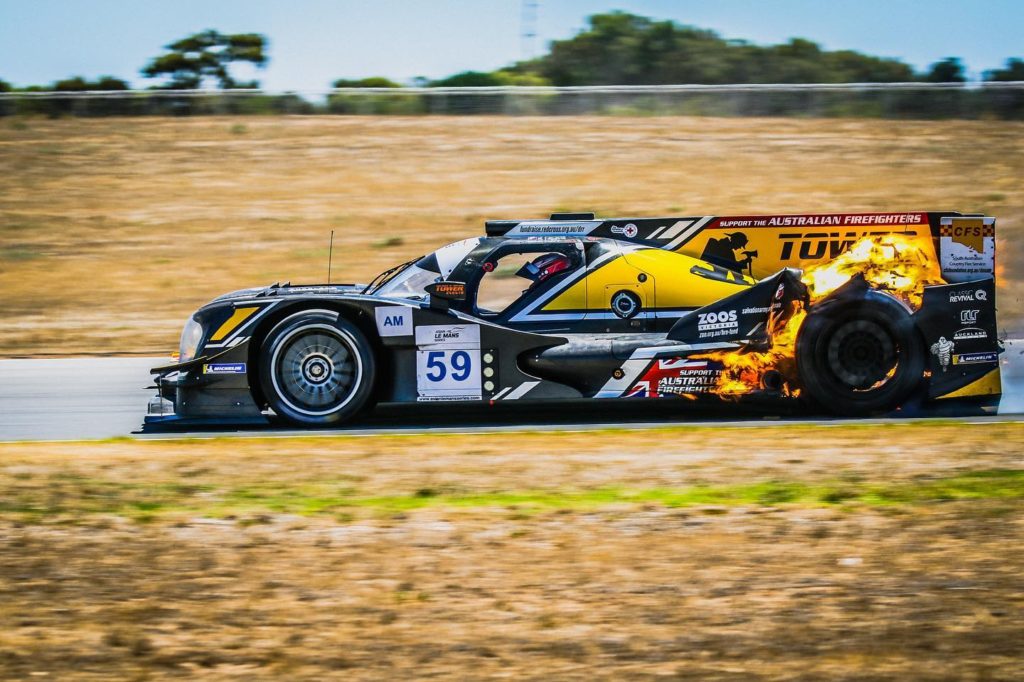
At least the quick official who attacked the blaze could thank himself, as the graphics on the side of the RLR Msport Oreca that said ‘Thank you Firefighters’ slowly turned brown, before burning away in front of him.
DID IT WORK?
TRT will dive into more from the Asian Le Mans’ Aussie debut in the next week, but the initial take-out is that it was successful.
While the crowd didn’t look enormous, the use of the full 7.77km circuit spread those there around a much greater area. A four-hour race allows for a more transient population, too – wandering around the circuit to check out different vantage points.
A better guide was the morning’s pit walk and autograph session, which was extremely busy. Was the crowd big? No, not in the context of a Supercar round. Bigger than Shannons? Yes. Something to build on? Definitely.
The 7.77km circuit was sensational. Yes, passing was difficult. Yes GT cars got in the way and caused several incidents with faster-lapping LMP2 machinery. But the same thing happens at the Nürburgring 24 Hour and most describe that as a feature of the race.
It’s hard to judge the circuit on one race but from a point of difference aspect, from a track-side spectator point of view (it’s spectacular to watch live) and perhaps more importantly from a driver feedback point of view, it’s a tick at this point in time.
The Bend gets better with every event, too, both on track and behind the scenes. There’s lots of effort involved and money being spent to improve each time something like this comes into town – and you can’t help but feel that the circuit (it’s still less than two years old, remember) will be better for this experience as it was for hosting the Supercars or other key events.
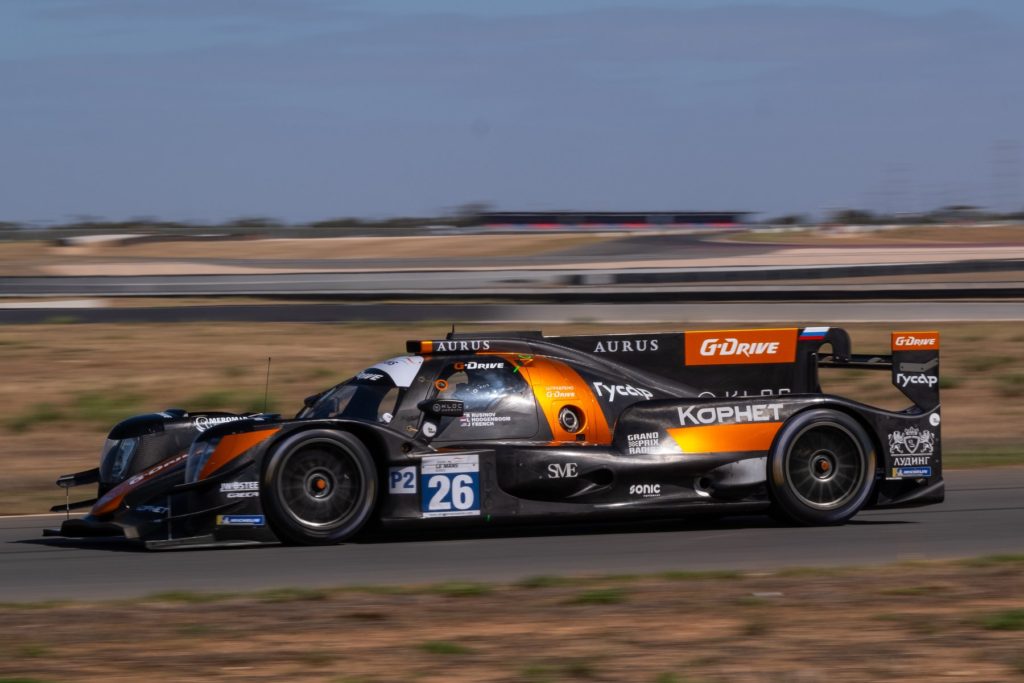
The feeling is that the inaugural ALMS event has been a positive first attempt.
The series is professional, the teams good and even better – it’s in a growth period. Add another five or six cars, especially some more serious LMP2 machinery, and it will be even better.
What did it lack? A support program was an obvious one – it’s just too early in the year for local categories to piece together a grid and get racing. A bigger program with different categories will lead to more punters, more media and more attention overall. How you solve that with an early January date, I don’t know. Finding a budget or a freight partner to bring more overseas classes into town may be one.
The addition of Shane van Gisbergen at the last minute was proof that it also needs some local stars to bolster the product.
As decent as the Asian series’ field is, the Australian market is unique in that we’re geared towards the big-name (dare we say it: Supercars) drivers bringing people through the gate. It is an unarguable fact that they sell tickets and generate media.
As good as the Aussie / Kiwi contingent already entered were and with the fullest of respect to them, adding SVG to the grid was a huge boost. If he was confirmed a month out, more pre-event PR, more pre-event ticket sales and more hype could have been created.

One of the most successful aspects of the Bathurst 12 Hour is the mix of local and international talent that just doesn’t occur anywhere else. The big names sell tickets, the internationals bring the competition and it’s all good.
Ultimately someone has to fund it, but a local team fielding a GT3 or LMP3 car driven by some local stars would be a solid addition and help build the event further.
Having said all that, there was a positive vibe this weekend. The international mixture in the paddock – half of the teams are crewed by Europeans and the other half those out of Asia – gave the paddock a global vibe lacking in other paddocks here, outside of the B12hr.
The show was good. The race was decent – a traditional enduro, compelling in parts, staid in others but with plenty going on to keep your interest.
The Asian Le Mans teams are professional, friendly and couldn’t have worked harder to embrace the local intricacies.
The track was good. Drivers liked it and it added drama to the race itself.
And finally, LMP2 cars are excellent in the flesh. They’re bloody quick, dance around the circuit and probably as visceral to watch live than a modern Formula 1 car, if not as fast. They could be the kind of car that people will try to come and see live – and so they should.
There’s no doubt that next year this event will be sharper, bigger and better than year one.
A positive start.



